Developmental and adult GAP-43 deficiency in mice dynamically alters hippocampal neurogenesis and mossy fiber volume
- PMID: 24576816
- PMCID: PMC4035301
- DOI: 10.1159/000357840
Developmental and adult GAP-43 deficiency in mice dynamically alters hippocampal neurogenesis and mossy fiber volume
Abstract
Growth-associated protein-43 (GAP-43) is a presynaptic protein that plays key roles in axonal growth and guidance and in modulating synapse formation. Previous work has demonstrated that mice lacking one allele of this gene (GAP-43+/- mice) exhibit hippocampal structural abnormalities, impaired spatial learning and stress-induced behavioral withdrawal and anxiety, behaviors that are dependent on proper hippocampal circuitry and function. Given the correlation between hippocampal function, synaptic connectivity and neurogenesis, we tested if behaviorally naïve GAP-43+/- mice had alterations in either neurogenesis or synaptic connectivity in the hippocampus during early postnatal development and young adulthood, and following behavior testing in older adults. To test our hypothesis, we examined hippocampal cell proliferation (Ki67), number of immature neuroblasts (doublecortin, DCX) and mossy fiber volume (synaptoporin) in behaviorally naïve postnatal day 9 (P9) and P26, and behaviorally experienced 5- to 7-month-old GAP-43+/- and +/+ littermate mice. P9 GAP-43+/- mice had fewer Ki67+ and DCX+ cells compared to +/+ mice, particularly in the posterior dentate gyrus, and smaller mossy fiber volume in the same region. In young adulthood, however, male GAP-43+/- mice had more Ki67+ and DCX+ cells and greater mossy fiber volume in the posterior dentate gyrus relative to male +/+ mice. These increases were not seen in females. In 5- to 7-month-old GAP-43+/- mice (whose behaviors were the focus of our prior publication), there was no global change in the number of proliferating or immature neurons relative to +/+ mice. However, more detailed analysis revealed fewer proliferative DCX+ cells in the anterior dentate gyrus of male GAP-43+/- mice compared to male +/+ mice. This reduction was not observed in females. These results suggest that young GAP-43+/- mice have decreased hippocampal neurogenesis and synaptic connectivity, but slightly older mice have greater hippocampal neurogenesis and synaptic connectivity. In conjunction with our previous study, these findings suggest that GAP-43 is dynamically involved in early postnatal and adult hippocampal neurogenesis and synaptic connectivity, possibly contributing to the GAP-43+/- behavioral phenotype.
© 2014 S. Karger AG, Basel.
Figures

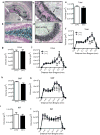
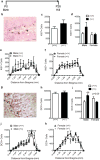
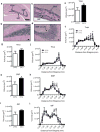
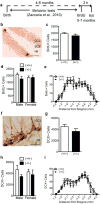
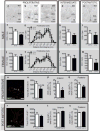
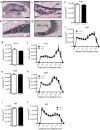
References
-
- Benowitz LI, Routtenberg A. GAP-43: an intrinsic determinant of neuronal development and plasticity. Trends Neurosci. 1997;20:84–91. - PubMed
Publication types
MeSH terms
Substances
Grants and funding
LinkOut - more resources
Full Text Sources
Other Literature Sources
Molecular Biology Databases
Miscellaneous

